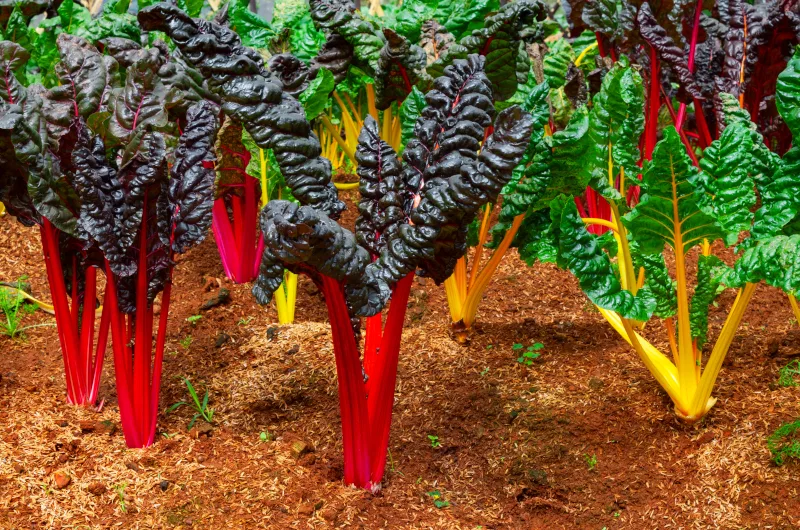How To Grow Swiss Chard
Swiss chard, scientifically known as Beta vulgaris subsp., is a vibrant leafy green vegetable that can add a burst of colour and flavour to your garden and your plate. In this guide, we’ll walk you through the process step by step, making it easy for you to cultivate this nutritious and beautiful plant.
1. Choose Your Swiss Chard Seeds
Start by selecting high-quality Swiss chard seeds. You can find various varieties, including ‘Bright Lights,’ ‘Fordhook Giant,’ ‘Rainbow Chard,’ and ‘Rhubarb Chard.’ Each offers a unique colour palette, from deep red to bright yellow stems and dark green leaves.
2. Sow Seeds
Plant your Swiss chard seeds in early spring, about an inch deep in well-prepared soil rich in organic matter. Ensure they are spaced about 12 inches apart in rows or blocks for adequate room to grow.
3. Provide Full Sun
Swiss chard thrives in full sun but can tolerate light shade. However, for the best results and the most vibrant colours, opt for a sunny spot in your garden.
4. Watering
Keep the soil consistently moist, especially during dry weather. Swiss chard enjoys regular watering but make sure not to overwater, as soggy soil can lead to root rot.
5. Companion Plants
Planting Swiss chard alongside companion plants like beans, cabbage, and lettuce can help deter pests and promote healthy growth. Avoid planting it next to beets or spinach, as they may compete for nutrients.
6. Harvest Tender Leaves
You can start harvesting Swiss chard when the young leaves reach a size of about 6 inches. Pick the outer leaves and allow the inner ones to continue growing for later use. Swiss chard is cut-and-come-again, which means it will produce new leaves after harvesting.
7. Frost Protection
Swiss chard can tolerate a light frost, but it’s best to cover the plants if temperatures drop significantly. In warmer climates, Swiss chard may survive through the winter and regrow in the following spring.
8. Lifespan
Swiss chard is typically an annual plant, but it may overwinter in milder climates. To ensure a constant supply of chard, consider planting successional crops throughout the growing season.
Swiss Chard FAQs
Does chard grow back every year?
Swiss chard is an annual plant but may overwinter in mild winters, regrowing in the following spring. If left to run to seed, fallen seeds are also likely to germinate the following spring.
Does Swiss chard need full sun or shade?
Swiss chard prefers full sun but can tolerate light shade.
How long does it take to grow Swiss chard?
Swiss chard typically takes 50 to 60 days to mature, depending on the variety and growing conditions.
Is Swiss chard cut-and-come-again?
Yes, Swiss chard is cut-and-come-again, meaning you can harvest the outer leaves, and the plant will continue to produce new ones.
Does Swiss chard need a lot of water?
Swiss chard enjoys regular watering to keep the soil consistently moist but should not be overwatered to prevent root rot.
When should you not eat Swiss chard?
Avoid eating Swiss chard with damaged or wilted leaves, as they may not be safe for consumption.
Can Swiss chard be eaten raw?
Yes, Swiss chard can be eaten raw in salads or used as a garnish, but it’s commonly cooked in various dishes.
What is the lifespan of Swiss chard?
Swiss chard is typically an annual plant but can overwinter in mild climates, extending its lifespan.
What can you not plant next to Swiss chard?
Avoid planting Swiss chard next to beets or spinach, as they may compete for nutrients. Instead, consider companion planting with beans, cabbage, or lettuce.
By following these simple steps and tips, you can successfully grow Swiss chard and enjoy its vibrant and nutritious leaves in your garden and on your dinner plate. Happy gardening!



